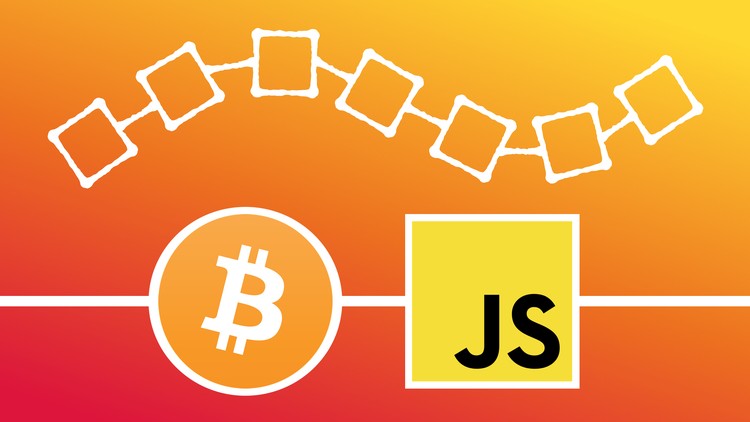Learn Blockchain By Building Your Own In JavaScript
- Description
- Curriculum
- FAQ
- Reviews

In this course you will be building your very own blockchain and decentralized blockchain network by using the JavaScript programming language. By building your own blockchain, you will learn how blockchain technology works under-the-hood, how decentralized blockchain networks function, how the code behind these technologies work, and why blockchain is such a secure and valuable technology.
The blockchain that you build in this course will have all of the following features:
- A proof of work algorithm to secure the network.
- Hashing algorithms to secure the data within the blockchain.
- The ability to mine (create) new blocks that contain data.
- The ability to create transactions and store them in blocks.
- An API/server that will be used to interact with the blockchain from the internet.
- It will be hosted on a decentralized blockchain network.
- A consensus algorithms to verify that the network nodes have valid data and are synchronized.
- A broadcasting system to keep the data in the blockchain network synchronized.
- Many other awesome features!…
When you have completed this course you will have built out your own blockchain prototype in code. You will have a thorough understanding of how blockchain technology actually works and why this technology is so secure and valuable. You will also have a deep understanding of how decentralized blockchain networks function and why decentralization is such an important feature for securing the blockchain. The whole process of storing, securing, and validating data/transactions on the blockchain will become very clear.
-
7Blockchain Introduction
-
8Constructor Function Explanation
-
9Prototype Object Explanation
-
10Blockchain Constructor Function
-
11Create New Block Method
-
12Testing Create New Block Method
-
13Get Last Block Method
-
14Create New Transaction Method
-
15Testing Create New Transaction Method
-
16SHA256 Hashing
-
17Hash Block Method
-
18Testing Hash Block Method
-
19What Is A Proof Of Work?
-
20Proof Of Work Method
-
21Testing Proof Of Work Method
-
22Creating A Genesis Block
-
23Section 1 Wrap-Up
-
24Blockchain Source Code
-
33Decentralized Blockchain Network - Introduction
-
34Creating Multiple Nodes
-
35Testing The Nodes
-
36Adding The Current Node's Url
-
37New Endpoints Outline
-
38Building "POST /register-and-broadcast-node" Endpoint - Part 1
-
39Building "POST /register-and-broadcast-node" Endpoint - Part 2
-
40Building "POST /register-node" Endpoint
-
41UPDATE: Installing the "request" library
-
42Testing "POST /register-node" Endpoint
-
43Building "POST /register-nodes-bulk" Endpoint
-
44Testing "POST /register-nodes-bulk" Endpoint
-
45Testing All Network Endpoints
-
46Synchronizing The Network - Introduction
-
47Transactions Introduction
-
48Refactoring Create Transaction Method
-
49Building "POST /transaction/broadcast" Endpoint
-
50Refactoring "POST /transaction" Endpoint
-
51Testing Transaction Endpoints
-
52Updating Mining Information
-
53Updating Mining Endpoint
-
54Building "POST /receive-new-block" Endpoint
-
55Testing New Endpoints
-
61Block Explorer Introduction
-
62Block Explorer Endpoints Outline
-
63Get Block Method
-
64Building "GET /block/:blockHash" Endpoint
-
65Get Transaction Method
-
66Building "GET /transaction/:transactionId" Endpoint
-
67Get Address Data Method
-
68Building "GET /address/:address" Endpoint
-
69Adding The Block Explorer File
-
70Block Explorer File Source Code
-
71Block Explorer File Explanation
-
72Testing The Block Explorer!





